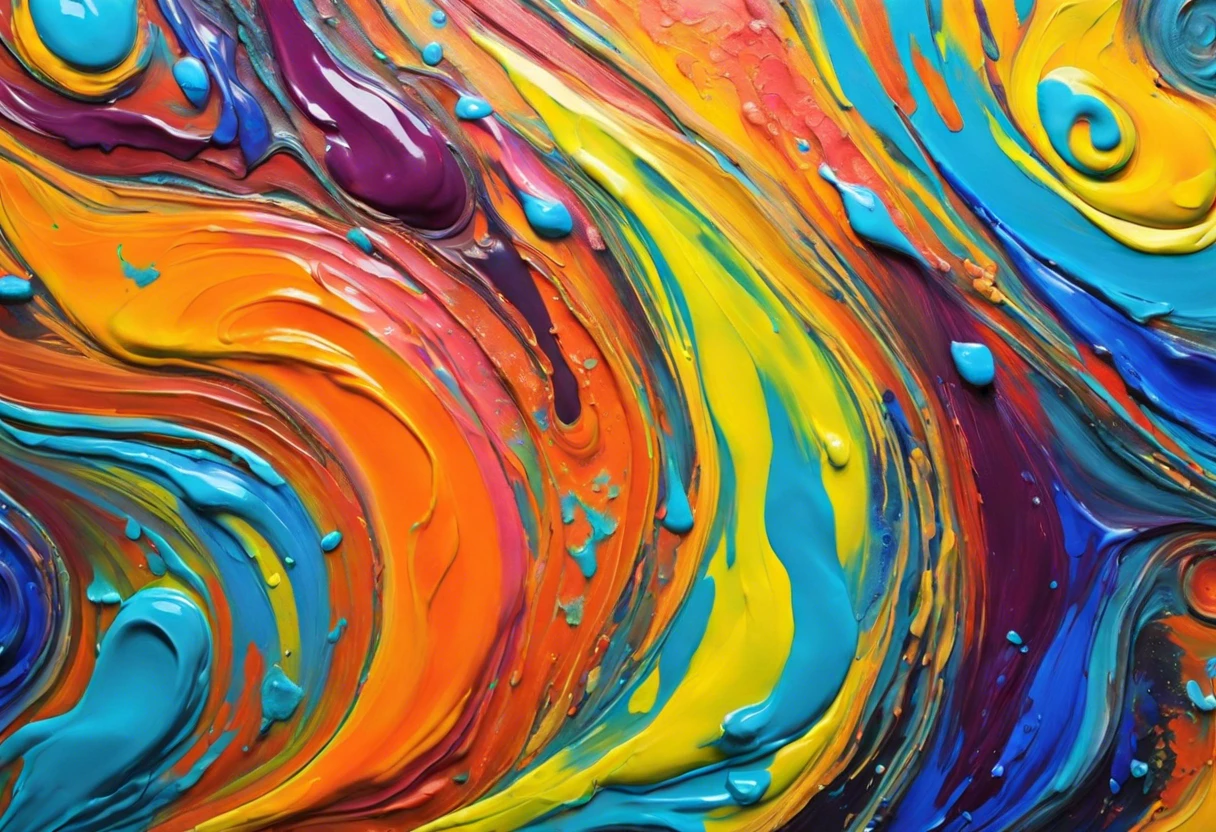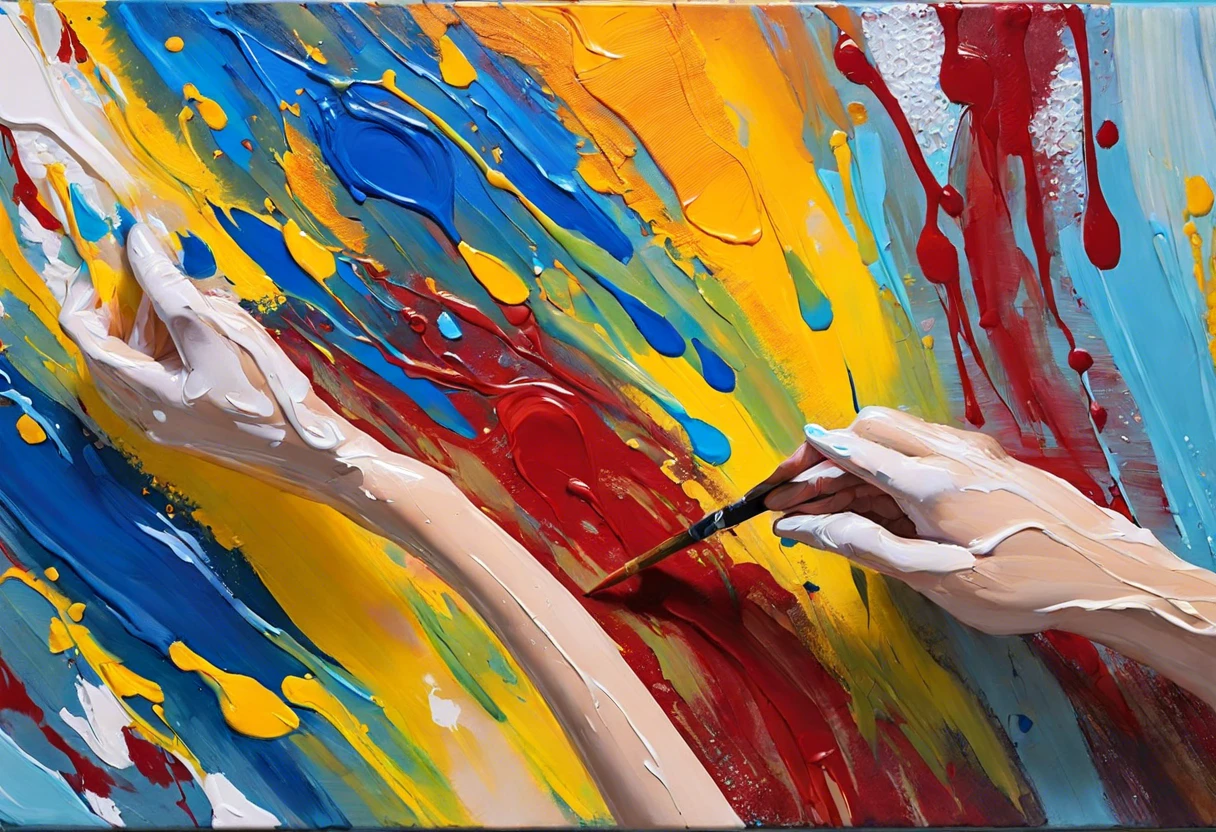Can Acrylic and Latex Paint Be Mixed?
Published on: March 10, 2025 | Last Updated: January 7, 2025
Written By: Alisha Winters
Paint mixing is when you blend different colors or types of paint together. It’s like baking a cake; you mix ingredients to get something new and beautiful!
So, can acrylic and latex paint be mixed? It’s super important to know this to get the right results in your art projects. I’ve had my share of messy mistakes when I didn’t think before mixing paints, and trust me, it’s tough to fix!
In this guide, I’ll cover what paint mixing is, what to know before combining paints, the steps to mix acrylic and latex paints successfully, common issues you might face, and even creative DIY project ideas. We’ll explore factors affecting the mixing process too, helping you understand how to seal acrylic paint on various surfaces like cement.
Contents
- 1 Can Acrylic and Latex Paint Be Mixed?
- 2 What is Paint Mixing?
- 3 What You Should Know Before Mixing Paints
- 4 Steps to Mix Acrylic and Latex Paint Successfully
- 5 Recommended Color Palette for Mixed Acrylic and Latex Paint
- 6 Types Of Acrylic and Latex Paints You Can Mix
- 7 Factors Affecting the Mixing Of Acrylic and Latex Paint
- 8 Common Issues When Mixing Acrylic and Latex Paint
- 9 Why Mixing Acrylic and Latex Paints Can Be Tricky
- 10 Testing Paint Compatibility: A Simple Guide
- 11 Finishing Touches: Ensuring Your Mixture is Perfect
- 12 Creative DIY Project Ideas Using Mixed Paints
- 13 Frequently Asked Questions About Mixing Acrylic and Latex Paint
- 14 Conclusion: Understanding the Nuances Of Mixing Acrylic and Latex Paint
- 15 Additional Resources
Can Acrylic and Latex Paint Be Mixed?
You can mix acrylic and latex paint, but it’s not always ideal. Both are water-based, but their properties differ. Mixing can lead to adhesion issues or texture problems. When painting tricky surfaces like behind radiators, you’ll want to ensure proper application techniques for the best results. painting behind tight spaces requires special tools and approach.
The Finishing Touch
A freshly painted wall is a blank canvas. The best way to bring your room to life is with a single piece of statement art that ties everything together.
Browse Wall Art at Big Wall DecorWhat is Paint Mixing?
Paint mixing is combining two or more colors to create new ones. It’s a crucial skill, especially for matching specific hues or achieving desired shades in your artwork.
A lot of people ask if acrylic and latex paint can be mixed. Personally, I’ve tried different combinations before, and the results can range from interesting to unpredictable!
In my work, I’ve used paint mixing to create unique gradients that pop on canvas. I often mix various types of acrylic paints to get the right finish, ensuring they bond well. Mixing the wrong types can lead to cracking or peeling over time! When working with exterior paint projects, temperature plays a critical role in achieving optimal results, so I always check the recommended painting temperature conditions.
What You Should Know Before Mixing Paints
What do you need for safe paint mixing?
- Acrylic Paint: Use quality acrylic paint, like Liquitex or Golden. These are crucial because mixing depends on the product’s chemistry.
- Latex Paint: Use latex paint, such as Behr Premium or Benjamin Moore. It’s vital to understand whether mixing is appropriate since each has different properties.
- Mixing Container: Use a clean blending container, like a Solo plastic cup. This prevents contamination and ensures an accurate mixture.
- Stirring Tool: A sturdy stir stick, such as a wooden craft stick, is essential for achieving a clump-free blend.
- Gloves: Wear latex or nitrile gloves, like AMMEX Multi-Purpose Gloves. These protect your skin from paint exposure during the process.
We have now covered essential tips for mixing paints. The next section will discuss how to mix acrylic and latex paints successfully.
Also See: What Temperature Can You Paint in? Ideal Conditions

Steps to Mix Acrylic and Latex Paint Successfully
Here are the steps to effectively blend acrylic and latex paint. Make sure to follow them all!
The Finishing Touch
A freshly painted wall is a blank canvas. The best way to bring your room to life is with a single piece of statement art that ties everything together.
Browse Wall Art at Big Wall Decor-
Start With the Right Ratio
Pour equal parts of acrylic and latex paints into your mixing bowl. This 1:1 ratio ensures that one paint doesn’t overpower the other.
Consider adjusting the amounts based on your desired result. A 3:1 acrylic to latex ratio may work better for certain finishes.
-
Combine Thoroughly
Use a stirring stick or paint mixer. Mix the two paints until there’s no visible separation; this usually takes about 2-3 minutes of vigorous stirring.
Scrape the sides of the container to remove any stuck paint. An even mix prevents inconsistencies during application.
-
Test a Small Sample
Using a small brush, apply the mixed paint on a test surface. This lets you see how the colors blend and how the texture feels once dry.
Always test before committing to a larger project. It saves time and resources—no one wants to redo a full wall!
-
Assess the Consistency
If your mixture is thick, add a bit of water to thin it. Start with 5% (About 10 Ml) of water, mixing in a teaspoon to easily see the change.
You want the paint to flow smoothly without becoming too watery. A good consistency rolls off the brush without excessive dripping.
-
Adjust if Necessary
If the pigments seem dull, adjust the ratio again. Adding more acrylic can enhance vibrancy without ruining the mix.
Keep in mind that different brands may react differently. Some may blend seamlessly, while others might need specific adjustments.
That covers the steps for successfully mixing acrylic and latex paint. Let’s now take a look at color palette recommendations.
Recommended Color Palette for Mixed Acrylic and Latex Paint
I suggest a “Coastal Bliss” theme, blending calming blues with crisp whites and hints of sandy beige, which all complement each other perfectly.
| Color Box | Hex Code | Color Name |
|---|---|---|
| #1E90FF | Dodger Blue | |
| #FFFFFF | White | |
| #F5DEB3 | Wheat |
We’ve wrapped up the recommended color palette for mixing acrylic and latex paints here. Let us turn our attention to the types of paints you can mix.
Types Of Acrylic and Latex Paints You Can Mix
Let’s cover the various types: Acrylic Paints, Latex Paints, Acrylic Gesso, and Acrylic Enamel.
-
Acrylic Paints
Acrylic paints are water-based, quick-drying mediums. They consist of acrylic polymer emulsions, making them versatile for surfaces like wood and canvas.
-
Latex Paints
Latex paints are also water-based but use a different binder, typically vinyl or acrylic. They’re durable for wall applications and generally washable with water.
-
Acrylic Gesso
Acrylic gesso prepares surfaces for painting and provides an absorbent base. It usually contains acrylic, calcium carbonate, and titanium dioxide, enhancing paint adhesion.
-
Acrylic Enamel
Acrylic enamels are thicker, providing a shiny, hard finish. They typically combine acrylics with resin, offering high durability for surfaces like metal and plastic.
I’d like to share what has worked for me with acrylic paints. I love their quick drying time and flexibility on surfaces, especially canvas and wood.
We have now covered the different types of acrylic and latex paints. Next, we will explore the factors influencing their mixing.

Factors Affecting the Mixing Of Acrylic and Latex Paint
What factors influence the effective combination of these paints?
-
Base Type – Acrylic paint has a polymer base, while latex is water-based; they react differently.
-
Drying Time – Acrylic dries faster than latex, creating potential blending issues.
-
Viscosity – The thickness varies; incompatible consistencies can cause separation or clumping.
-
Color Pigments – Different pigments may not mix well, affecting the final color and opacity.
Common Issues When Mixing Acrylic and Latex Paint
My friend once struggled to mix acrylic and latex paint for a project. The paint quickly separated, and it just wouldn’t stick! Frustrating, right?
To fix this, always use a compatible medium, like a latex extender. Mixing in a 1:4 ratio (20%) can help blend them smoothly. Test on a small patch to ensure adhesion before committing!
Why Mixing Acrylic and Latex Paints Can Be Tricky
Mixing acrylic and latex paints sounds simple, but there’s more beneath the surface. Understanding their fundamental differences can save you from headaches!
- Adhesion Problems: Since acrylics dry hard, while latex stays flexible, the bond may not hold well over time. This can lead to peeling or flaking.
- Texture Variations: Mixing can create an uneven texture. It’s essential to consider how each paint applies and dries on the surface.
- Color Changes: You might end up with unexpected shades due to chemical reactions. Always test your mix!
Testing Paint Compatibility: A Simple Guide
Ever wonder how to test if your acrylic and latex paints will get along? Follow these straightforward steps!
The Finishing Touch
A freshly painted wall is a blank canvas. The best way to bring your room to life is with a single piece of statement art that ties everything together.
Browse Wall Art at Big Wall Decor-
Create a Small Sample
Mix 1 part acrylic to 1 part latex in a small cup. Stir well for about 1-2 minutes to combine.
-
Apply to a Test Surface
Use a piece of scrap wood or canvas—something you don’t mind messing up! Apply the mix with a small brush.
-
Observe the Drying Process
Watch how it dries over 30 minutes. Do you notice shifting colors or separation?
-
Evaluate the Finish
Check for adhesion, texture, and any visible cracking once fully dried. This insight is invaluable!
Finishing Touches: Ensuring Your Mixture is Perfect
After ensuring your mixture’s the right consistency, with a flow time of 25-30 seconds in a cup, give it a quick shake. Clean your brushes immediately in lukewarm water to prevent hardening.
For inspection, check the mixture ratio; it should be 3:1 latex acrylic for ideal adhesion. Use products like GAC 900 to boost performance. Always trust the results of your test patch!
If this isn’t your first time mixing paints, use a viscosity meter for precise measurement, aiming for 70-90 centipoise (Cp) for optimal flow. Maintain consistent pressure during application for better results.
Creative DIY Project Ideas Using Mixed Paints
Ready for some fun? Try creating a beautiful marbled vase or a bold abstract wall art piece using mixed acrylic and latex paints!
Start by getting some cheap ceramic vases or canvas boards from the thrift shop. You can score these for as low as $2–5! Grab a few tubes of paint too—spending around $15 total—and set aside a couple of hours for good old creative magic. If you’re curious about expanding your painting techniques, painting interior surfaces offers another exciting creative avenue to explore.
Now, if you’re wondering about mixing acrylic and latex paints, here’s a quirky tip from my own exploration. Instead of mixing, try layering—apply one type on top of the other for stunning texture and surprises as they dry. If you’re considering painting exterior surfaces like brick walls, you might want to explore specialized techniques for painting brick home exteriors. Trust me, it’s a game changer!
Frequently Asked Questions About Mixing Acrylic and Latex Paint
Can You Mix Acrylic Paint With Latex Paint Without Issues?
I’m often asked, can you mix acrylic paint with latex paint without issues? Mixing these two can be tricky; it’s important to note that they have different chemical bases. Acrylic paint is water-based and dries to a hard finish, while latex paint is more flexible and often used for walls. Their differing properties can lead to adhesion problems.
What Are the Best Practices for Paint Mixing?
What are the best practices for paint mixing? It’s best to use equal parts of each paint when mixing. This ensures a more balanced consistency and results in a smoother application. Always test a small batch first on scrap material to see how they react together. If you’re curious about alternative techniques, you might want to learn more about paint blending methods.
Will Mixing Acrylic With Latex Change the Drying Time?
Will mixing acrylic with latex change the drying time? Yes, it can! Acrylic paint tends to dry faster than latex paint, which might alter your initial drying time when mixed. Keep this in mind, especially for larger projects where timing is crucial. If you encounter unexpected paint behavior during mixing, you might want to explore potential paint bubbling issues.
Is It Safe to Mix Different Brand Paints?
Is it safe to mix different brand paints? Generally, it’s not recommended. Each brand has its own formula; combining them could lead to unexpected results. Some brands use additives that won’t blend well with others, which can affect adhesion and longevity. If your paint brushes become stiff from mixing incompatible paints, you might want to restore your brush’s original softness.
What Should I Do if the Paint Mixture Separates?
What should I do if the paint mixture separates? If your paint mixture separates, you should stir it thoroughly before use. Separation can occur when the paints react differently to temperature or humidity. Proper mixing can help re-emulsify them. When dealing with stubborn paint separation, you might need to adjust your paint thinning technique.
Can I Use Acrylic Paint on Canvas if I Mixed It With Latex?
Can I use acrylic paint on canvas if I mixed it with latex? It’s not recommended; the mixed paint may behave unpredictably on canvas. Using pure acrylic is better, as it will give you the durability and finished look you’re going for.
Conclusion: Understanding the Nuances Of Mixing Acrylic and Latex Paint
I hope this was worth your while. We covered what paint mixing is, factors to consider before mixing paints, steps to mix acrylic and latex paints successfully, recommended color palettes, types of paints you can mix, common issues faced, and a few creative DIY project ideas.
Hopefully, I was able to impart some of my experience. So, can acrylic and latex paint be mixed? Yes, but remember to use the same base and follow the right steps. Proper preparation helps avoid issues, leading to stunning results for your projects.
If you found this information helpful, be sure to explore more resources at Paint Answers for further insights and tips.
Additional Resources
- Betti, C., & Sale, T. (2012). Drawing: A Contemporary Approach (6th ed.). Belmont, CA: Cengage Learning.
- How to Mix Latex & Acrylic Paints | ehow.com
Experienced interior designer with 15+ years in transforming spaces, blending artistry with expertise in color and design. Rhode Island School of Design graduate, specializing in restorations and modern makeovers.
Blending, Topics









